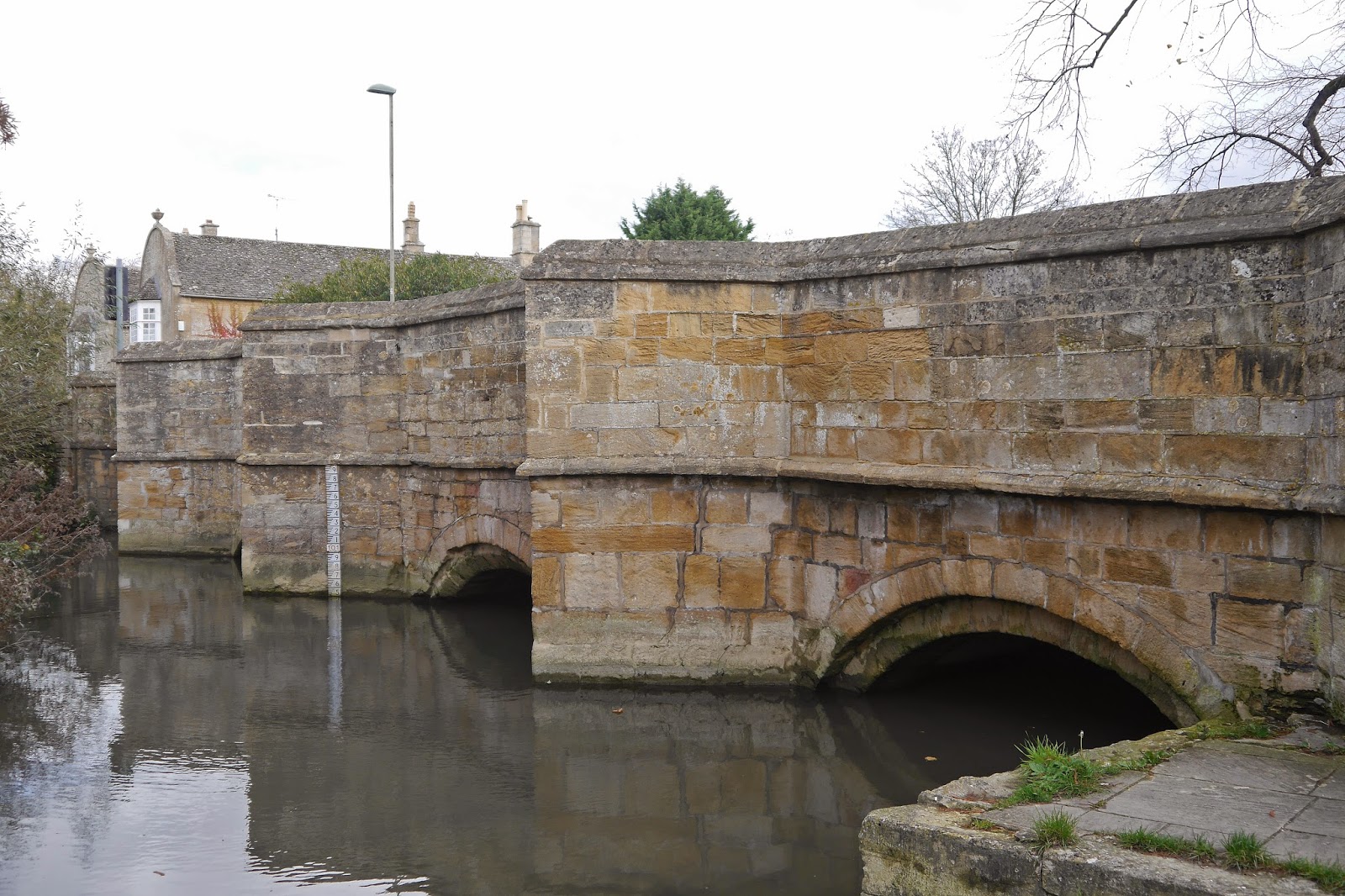St John Baptist
Pevsner describes Burford as a "remarkable small medieval town". I had a brief visit in 2009 and today seemed a good opportunity to see more, especially the almshouses. I parked in Sheep St just near the Lamb Inn, said to be the oldest (of quite a few) in the town.
At the end of Sheep St I crossed the picturesque High St. There are some photos in my 2009 post and details of many of the buildings can be found in a comprehensive article in Cotswold Life magazine. I walked along Witney St opposite, turning left into Guildenford to find Castle's Almshouses, dating from 1726. Pevsner describes them of being "of no architectural merit" and I have to agree. But continuing into Church Lane brought me to the Great (or Warwick) Almshouses, which were much more meritorious.
The plaque reveals that they were founded in 1457 by Richard, Earl of Warwick, but apparently the real founder was a local burgess and wool merchant named Henry Bishop. They were rebuilt in 1826 but still look convincing medieval to my eye.
I continued on to pass the church, a Norman foundation but later remodelled, and then cross the river via is 14th or 15th century bridge to begin the rural part of my walk.
The route followed the road towards Chipping Norton for a bit then veered north east across fields to Widley Copse, then along a track and more fields to reach Dean Bottom (below). A combination of lack of good views and the low position of the sun made this the first real photographic opportunity.
At the end of the Bottom, near the hamlet of Widford is the 13th St Oswald's chapel, built on the site of a Roman villa. The bell cote houses the sanctus bell which would have been rung during Holy Communion.
Inside there are 14th century frescoes.
The final phase of the walk followed the River Windrush back into Burford.
Back in Witney St you pass the modestly named Great House. Pevsner says that it "looms like an Italian piazzo amidst shops and cottages" and this is a very exact judgement. It was built about 1700 and the unusual castellation of the parapet is thought to refer to the man who had it built, John Castle, a successful physician.
Returning to the High St, I headed uphill to find Price's Almshouses which date from 1896 and were specified to be built in an "Elizabethan Style". There are three cottages, with the entrances to two of them at the side of the main block.
Conditions: mostly bright and sunny.
Distance: about 6 miles.
Map: Explorer OL 45 (The Cotswolds).
From: 50 walks in the Cotswolds (AA)
Rating: four stars.










No comments:
Post a Comment